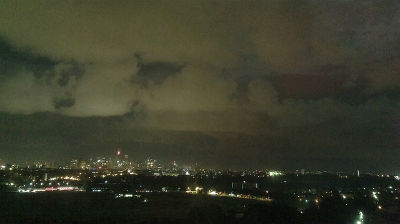Government’s analysis, assessment and research activities
Preparation for weather and climate risks is possible

Many of the weather and climate risks threatening Finland over the next few years can be managed by being well prepared. Knowledge of the risks has now been compiled in the project ‘Assessment of Weather and Climate Risks (SIETO)’. In particular, it is possible to prepare reasonably well for weather phenomena affecting infrastructure and causing immediate danger, such as floods and storms. Risks are expected to increase over the next few decades, which in turn increases the need for preparedness. Even then it will be possible in the Finnish circumstances to manage risks associated with changing weather and water conditions if the economy develops favourably and society remains stable.
The drought, heat, forest fires and downpours of the summer of 2018 were a reminder that, even in Finland, weather-related phenomena cause major economic and societal impacts. Climate change also changes current threats and causes gradually developing new risks for society, infrastructure and nature.
“Effective management of changing risks increases the wellbeing and safety of people,” emphasises the coordinator of the SIETO project Heikki Tuomenvirta, Senior Research Scientist at the Finnish Meteorological Institute.
The climate risk assessment drawn up provides the basis for the governance model developed in the project and proposed for future use. The governance model helps with updating the climate risk assessment regularly and linking it to the existing systems of various actors, for instance in the rescue and preparedness sectors and in regional risk assessments. In line with the Security Strategy for Society, it also supports general risk assessment steering the preparedness of society as a whole.
Risks of pests and diseases difficult to assess
Risks that are indirectly related to weather and climate conditions are difficult to assess and manage. Examples of these include diseases and pests, some of which are invasive species. These pose risks on human health, the natural environment, agriculture and forestry, and game and fisheries. Another risk category that is difficult to assess and manage are the cross-border effects of climate change. Climate change has various effects, for example, on economic actors and international security, and further on the security of supply and overall security in Finland.
The changing risks are not distributed evenly. Older people are much more vulnerable to the effects of heatwaves than the rest of the population, high income earners have a better chance of protecting themselves, for example, against rising food prices than low income earners, and smaller players in the natural resources sector are not necessarily able to buy insurance against financial damage. The risk of drought is the greatest in south and southwest Finland, where there are few lakes, the groundwater reserves are fragmented, and water use in relation to the water resources available is the greatest.
The operational model enhances risk management
Globally, weather and climate risk management needs to be developed by harmonising and enhancing risk assessments. The mainstay of the governance model consists of up-to-date and systematically collected risk data. This calls for constant information on the past and future development of the climate and society. The governance model is intended to apply the basic data to producing sector-specific risk assessments, which will ultimately be combined cost-effectively into a national weather and climate risk assessment.
“The idea with the proposed governance model is to make the weather and climate risk assessments more consistent than at present, and to provide relevant information that can be considered in the overall national risk assessment,” says Professor Mikael Hildén of the Finnish Environment Institute, who led the development of the governance model.
The project implements the National Climate Change Adaptation Plan, the central objective of which is sector-specific risk management.
“The climate is warming so rapidly that, in addition to mitigation measures, it is necessary to adapt to its impacts by strengthening the resilience of society,” says Saara Lilja-Rothsten of the Ministry of Agriculture and Forestry, who chaired the project steering group.
The SIETO project was carried out as part of the implementation of the Government’s analysis, assessment and research activities for 2017. The project was coordinated by the Finnish Meteorological Institute, which was responsible for making the risk analysis. The Finnish Environment Institute was responsible for the development of the operational model. Also participating in the project were the Natural Resources Institute Finland, the National Institute for Health and Welfare, and the Faculty of Biological and Environmental Sciences at the University of Helsinki.
Report: Weather and climate risks in Finland – National assessment (in Finnish)
Report: Climate-resistant Finland –A governance model for organizing weather and climate risk assessments (in Finnish)
Inquiries:
Risk analysis: Project Manager, Senior Research Scientist Heikki Tuomenvirta, Finnish Meteorological Institute, tel. +358 295 394 122, [email protected]
Operational model: Professor Mikael Hildén, Finnish Environment Institute, tel. +358 295 251 173, [email protected]
National Climate Change Adaptation Plan: Senior Adviser Saara Lilja-Rothsten, Ministry of Agriculture and Forestry, tel. +358 295 162 060, [email protected]
